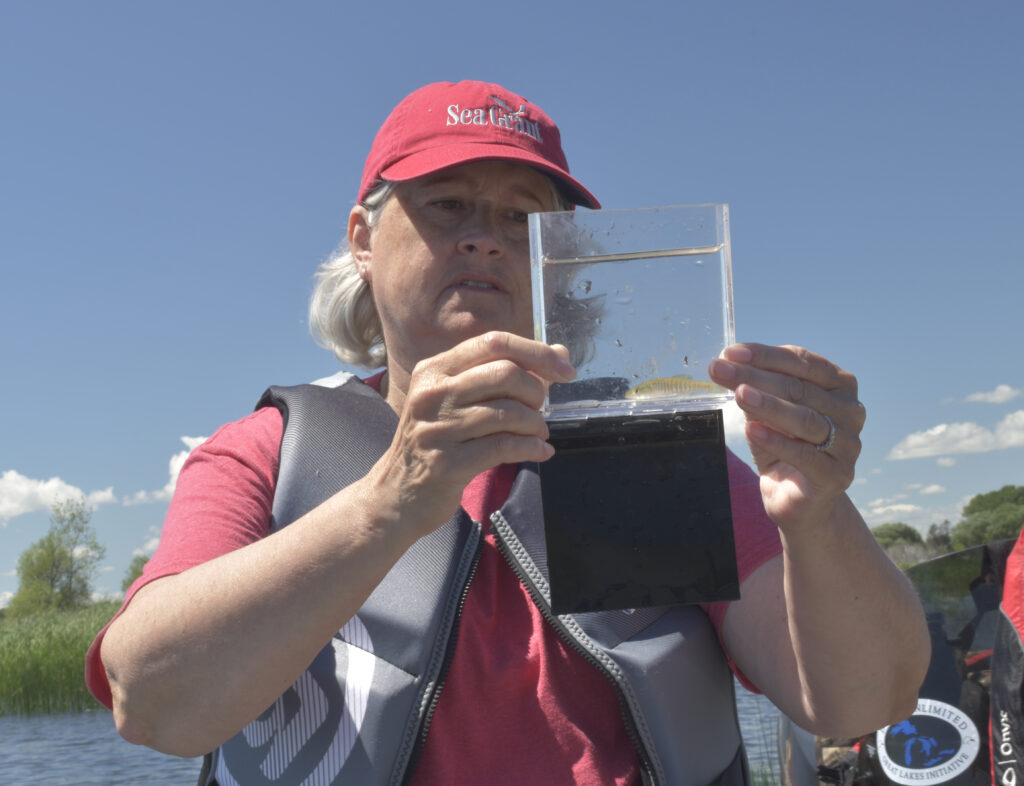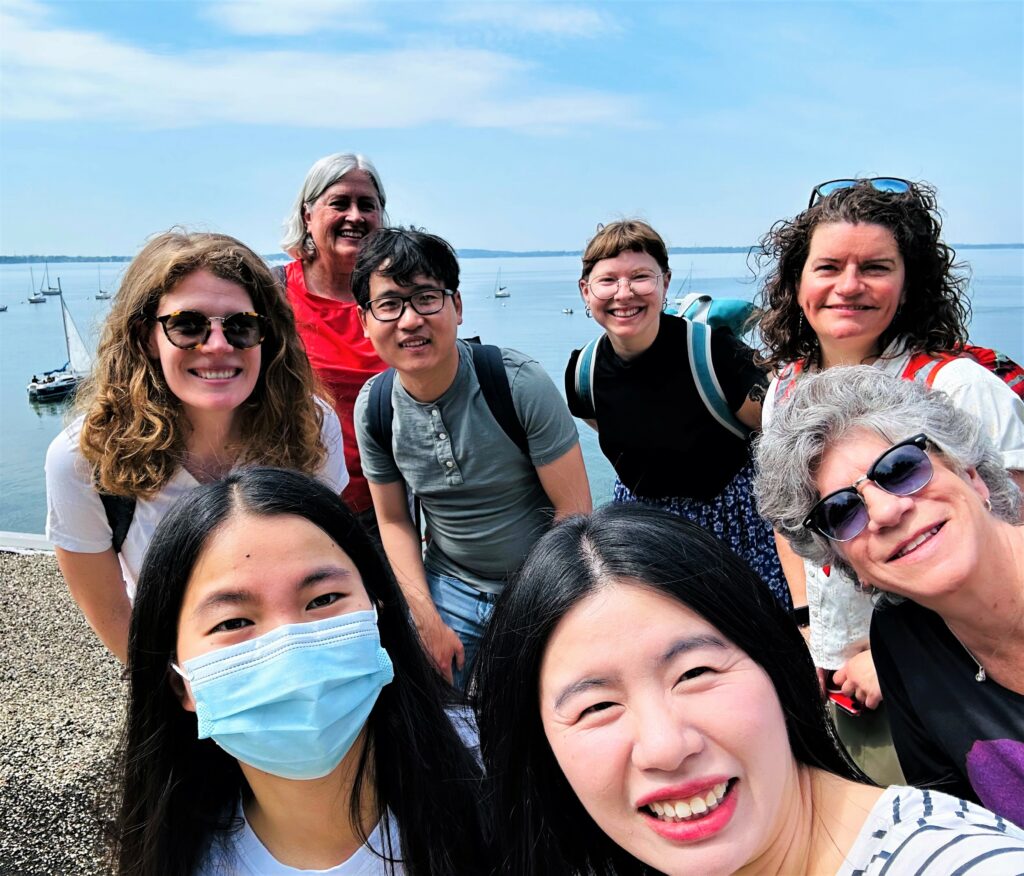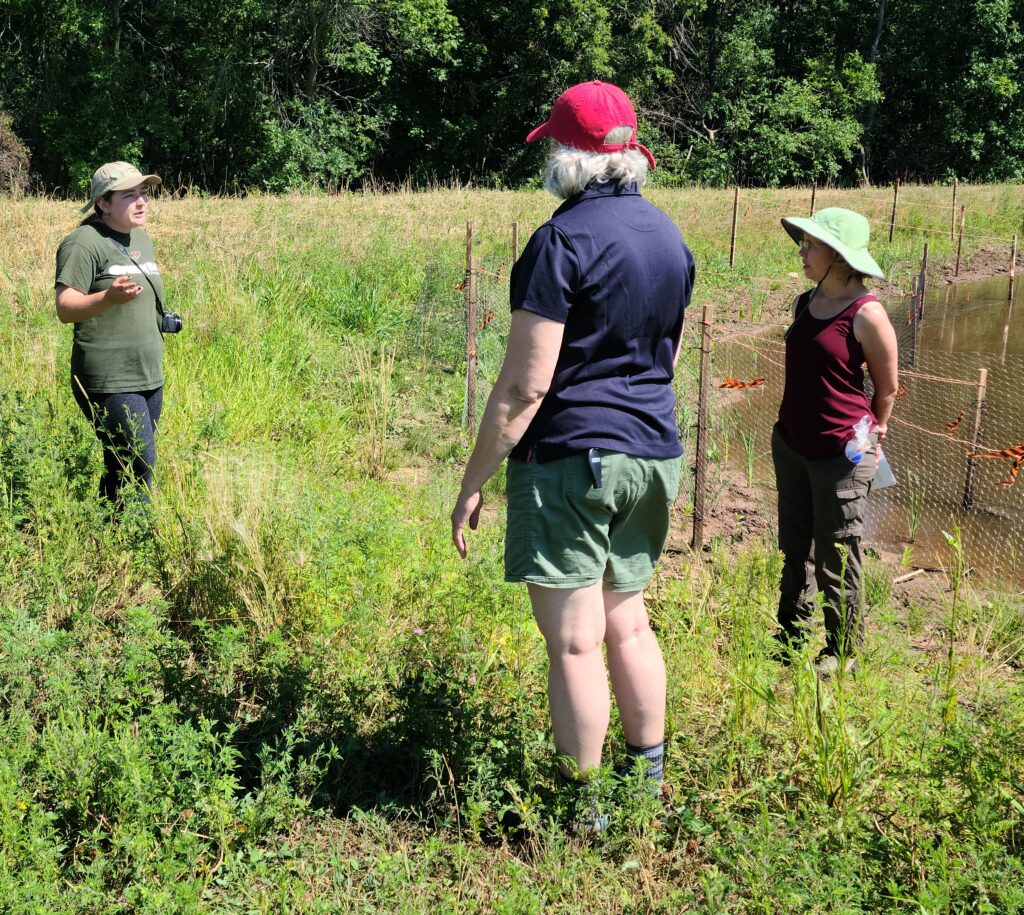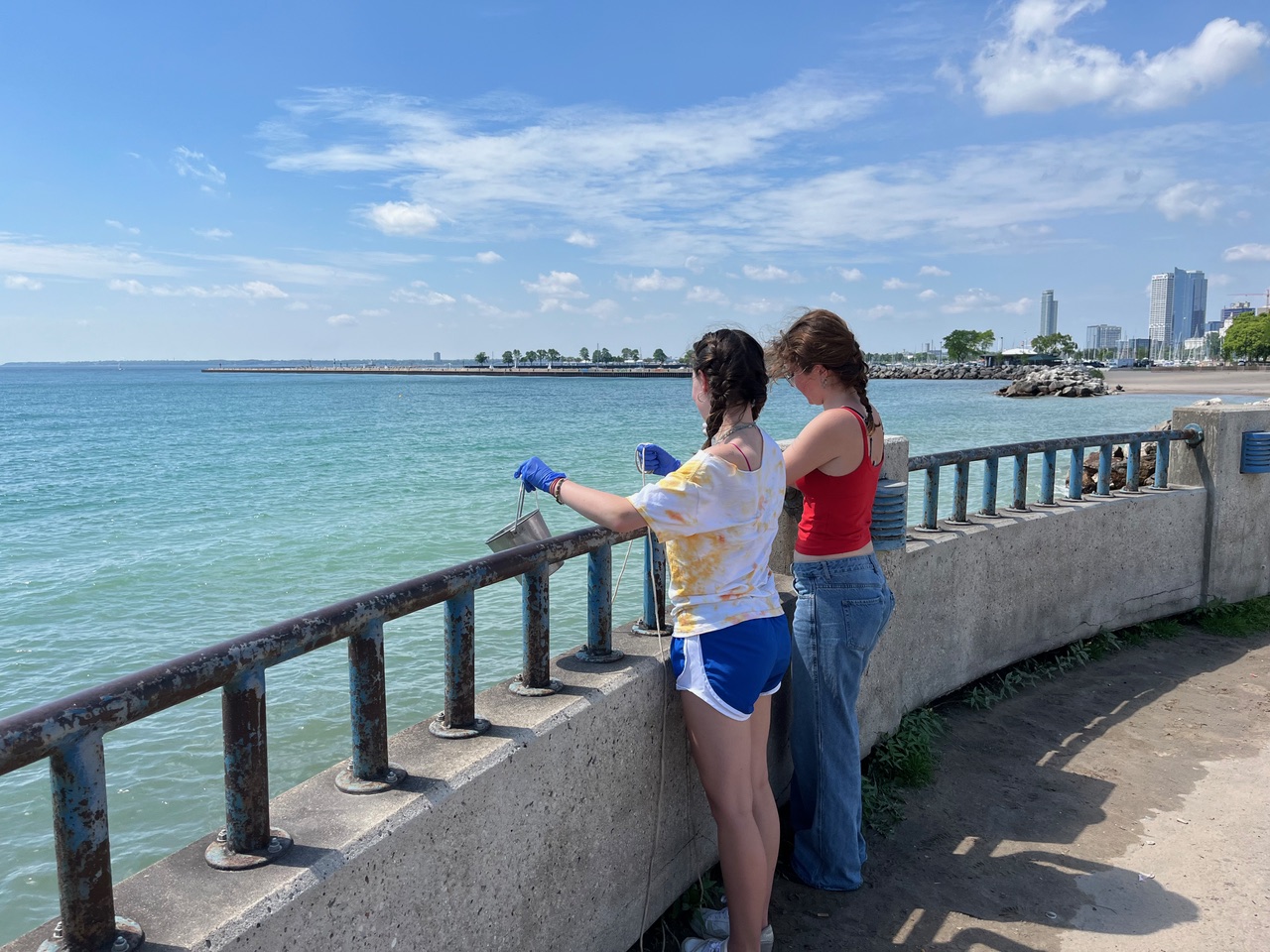
Moira Harrington studies a young fish temporarily collected from Green Bay on Lake Michigan. Image Credit: Marie Zhuikov, Wisconsin Sea Grant
Moira Harrington, Wisconsin Sea Grant assistant director for communications, recently announced plans to retire, effective June 14. Rather than tiptoe into the waters of retirement gradually, Harrington will dive right in, making the decision only three months beforehand.
“I’ve never taken an exercise class scheduled in the middle of a workday, but I feel like I need to plunge right in and try it. I retire on a Friday and the next Tuesday, I’m doing a strength-training class,” Harrington said.
As the head of communications, Harrington supervises a staff of five including writers, podcasters, editors, a videographer and graphic designer. She directs the creation of materials that promote science literacy and coordinated media relations. Harrington also assists with external relations. She was a former reporter for newspapers, magazines and a statehouse news service. She also worked for Wisconsin’s statewide public television broadcasting system, public health tobacco education campaigns, and as the state director and press secretary for former U.S. Sen. Russ Feingold of Wisconsin.
Her departure after almost 15 years will leave ripples felt throughout the program, both locally and nationally.
“We’ve been so fortunate to have a comprehensive science communications team,” said David Hart, Wisconsin Sea Grant assistant director for extension. “Moira crafted and guided that team. She contributed to the success of our Sea Grant and Water Resources missions in so many ways that it is hard to keep track. Besides writing and reviewing hundreds of stories, she did all our reporting, organized legislative visits and prepared us for rigorous program reviews. Then there are the smaller, but priceless ways she helped us stay connected like preparing a monthly newsletter sharing the personal side of our staff and co-organizing a bi-weekly travelogue series. I think we are going to reflect on all those little things she did long into the future.”
A common theme in Harrington’s career was working for organizations that contribute to society in a positive way. In terms of Sea Grant, she said, “It touches so many sectors of a community, it touches our culture and sparks research that has applications in people’s lives. It’s our role as communicators to share that information and it’s so rewarding.”
Not long after she began her job with Sea Grant, Harrington took on a leadership role, chairing the Great Lakes Sea Grant Communications Network (2011-2012). Later, she chaired the Networks Advisory Council, which is a committee within the Sea Grant Association, and the National Sea Grant Communications Network (2016-2018). One of her legacies is reinstating a national communications award program. “I think it’s important to recognize our work through a formal process and I hope it continues after I retire,” she said.

Moira Harrington (in the back) and members of her communications team meet with microplastics researchers who were conducting a Sea Grant experiment atop the Limnology Building on the University of Wisconsin-Madison Campus. Pictured in front: Ph.D. Student Ziyan Wu, Professor Mohan Qin, Science Communicator Marie Zhuikov; Second row: Writer Jenna Mertz, Professor Haoran Wei, Video and Podcast Producer Bonnie Willison, Creative Manager Sarah Congdon; Back row: Moira. Image Credit: Mohan Qin, University of Wisconsin-Madison.
“Moira has done so much for Sea Grant,” said Jill Jentes Banicki, current National Sea Grant Communications Network chair. “With every initiative she oversaw and every communicator, educator and director she worked with, she showed how important telling the Sea Grant story is to a successful and impactful Sea Grant network. We are so grateful to Moira for everything she has done for Sea Grant Communications over the last fourteen years and will miss her beyond words.”
Another legacy attributable to Harrington’s behind-the-scenes work is the creation of the university’s recent Center of Excellence in PFAS Environmental Science. In 2023, she wrote a story based on research by UW-Madison’s Christy Remucal on per- and polyfluoroalkyl substances and how they were moving via groundwater into Lake Michigan.
“I pushed the story a bit more than I sometimes do, and it got picked up in the media in various places,” Harrington said. “The findings have implications for PFAS contamination everywhere because it can be applied to other situations where people are trying to understand a contamination site.”
A few weeks later, Harrington was contacted by the Federal Relations Office on the Madison campus. “They said they’d like to work with a member of the house of representatives or maybe one of the U.S. senators from Wisconsin. They wanted to figure out some way to put additional money specifically into PFAS research. So, I just connected people. I was like, okay, here’s Christy and you guys work together,” Harrington said.
Remucal, who is now the interim director of Wisconsin Sea Grant, wrote a proposal for the center. “Then we both kind of forgot about it,” Harrington said. But about a year later, after a grueling federal budgeting process, the funding came through for the center.
“I didn’t do the research and I didn’t get the funds from the federal government, but my ability to tell the story of that sparked a bigger thing that’s now resulting in almost a million dollars coming to support even more PFAS research. That feels good,” Harrington said.

A University of Wisconsin-Green Bay student (left) describes restoration efforts undertaken in the Wequiock Creek Natural Area in Wisconsin to Moira and Sea Grant Editor Elizabeth White (right). Image credit: Marie Zhuikov, Wisconsin Sea Grant
Some of her favorite projects involved creating biennial reports for the public and other communications products. Harrington credited her staff, one of the largest Sea Grant communications teams in the country, for their contributions. “It’s been a true honor working with the communications staff here. Everybody brings such a talent set. I love how we come together as a team to create meaningful and useful products. It’s been incredibly stimulating to have an idea and know that I can turn to a colleague in communications and they’ll make it happen. That’s just really fun.”
Harrington expects her retirement will involve four Bs: Brian, Baby, Bees and Books. Brian Koenig is her husband, who has plans for his own retirement and will no doubt enjoy having Harrington around more. One of their daughters had a child in April, so the Baby part is regarding their first grandbaby. Bees is about beekeeping. Harrington learned how to keep honeybees a few years ago. She’s maintained one hive and is getting a second (or more) in retirement. The fourth B is for Books. Harrington has been in the same book club for 24 years and plans to spend more time reading.
Beyond that, she will immerse herself more fully into her current volunteer work, which includes chairing the city of Madison Board of Park Commissioners and serving on the board for Olbrich Botanical Gardens in Madison.
Harrington leaves behind a solid team and significant list of accomplishments. At least one team member was heard musing, “We’ll do our best to stay afloat without her.”





